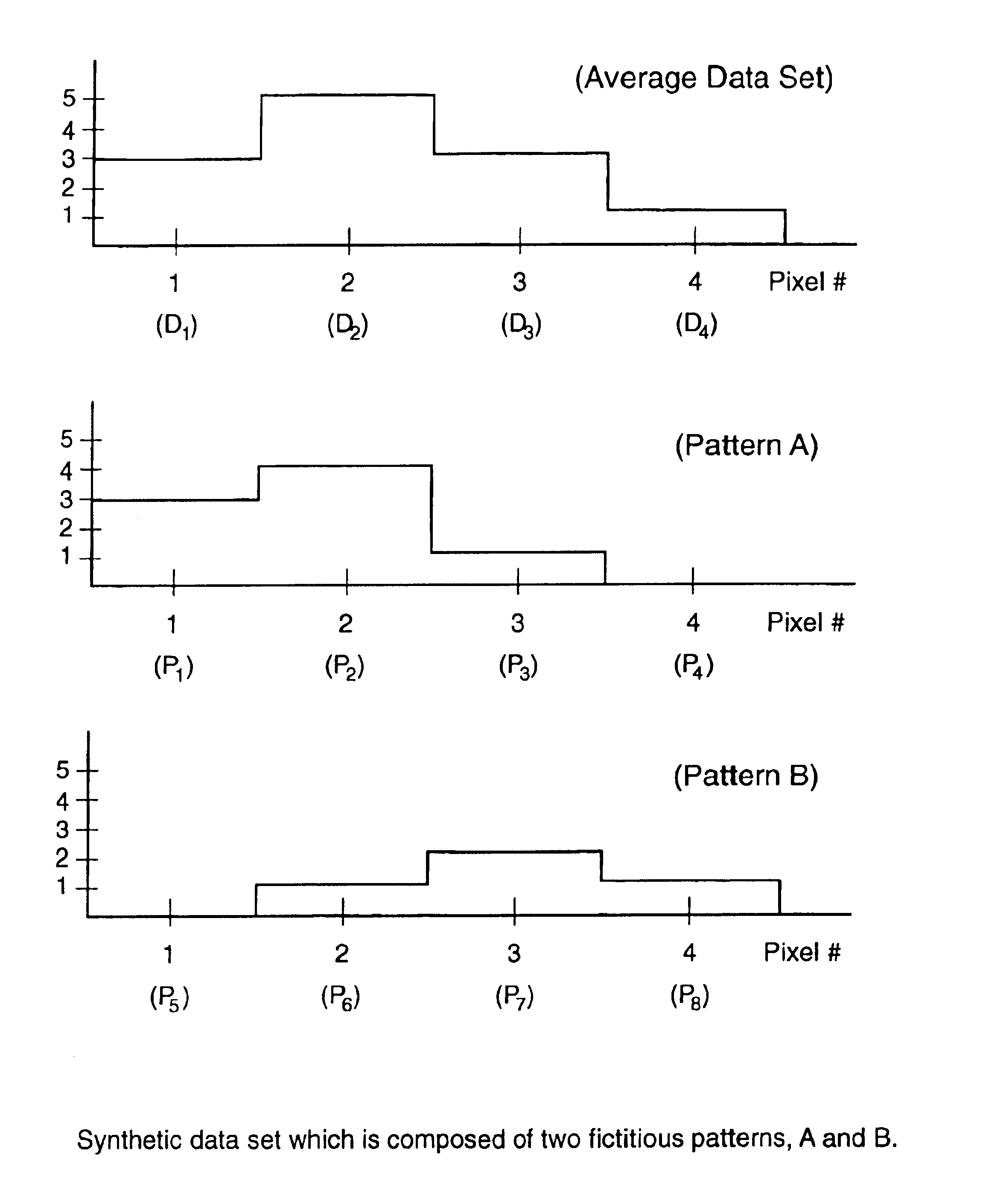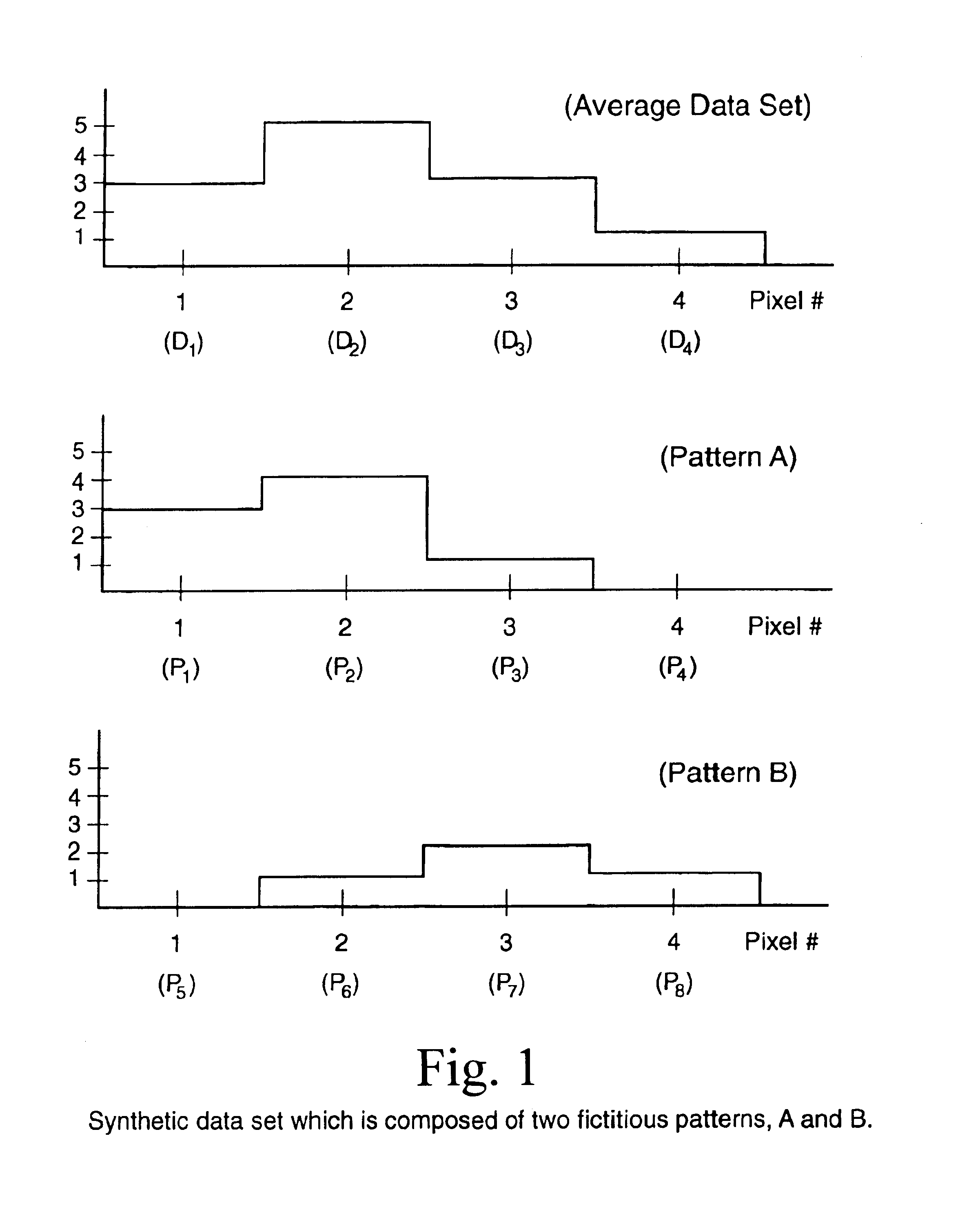Aspire (autonomous spatial pattern identification and recognition algorithm)
- Summary
- Abstract
- Description
- Claims
- Application Information
AI Technical Summary
Benefits of technology
Problems solved by technology
Method used
Image
Examples
Embodiment Construction
[0016]As mentioned above, the present invention includes an automatic endmember classification algorithm for hyperspectral data cubes. This algorithm has been given the name ASPIRE (Autonomous Spatial Pattern Identification and REcognition algorithm). This algorithm is an improved version of a pattern recognition technology which was developed at Massachusetts Institute of Technology (MIT). The MIT algorithm is called the Extended Cross Correlation (XCC) technique, and it was designed to separate patterns from time resolved spectroscopic data. ASPIRE uses XCC as one of its core algorithms, but it features many improvements. These include: the use of Principle Components Analysis (PCA) to preprocess the data, an automatic endmember searching algorithm, and a Bayesian algorithm which is used to unmix the end-members. This invention also represents a new use of the XCC technology, because it had never before been used to identify spatial targets in hyperspectral data.
[0017]In this desc...
PUM
 Login to view more
Login to view more Abstract
Description
Claims
Application Information
 Login to view more
Login to view more - R&D Engineer
- R&D Manager
- IP Professional
- Industry Leading Data Capabilities
- Powerful AI technology
- Patent DNA Extraction
Browse by: Latest US Patents, China's latest patents, Technical Efficacy Thesaurus, Application Domain, Technology Topic.
© 2024 PatSnap. All rights reserved.Legal|Privacy policy|Modern Slavery Act Transparency Statement|Sitemap



